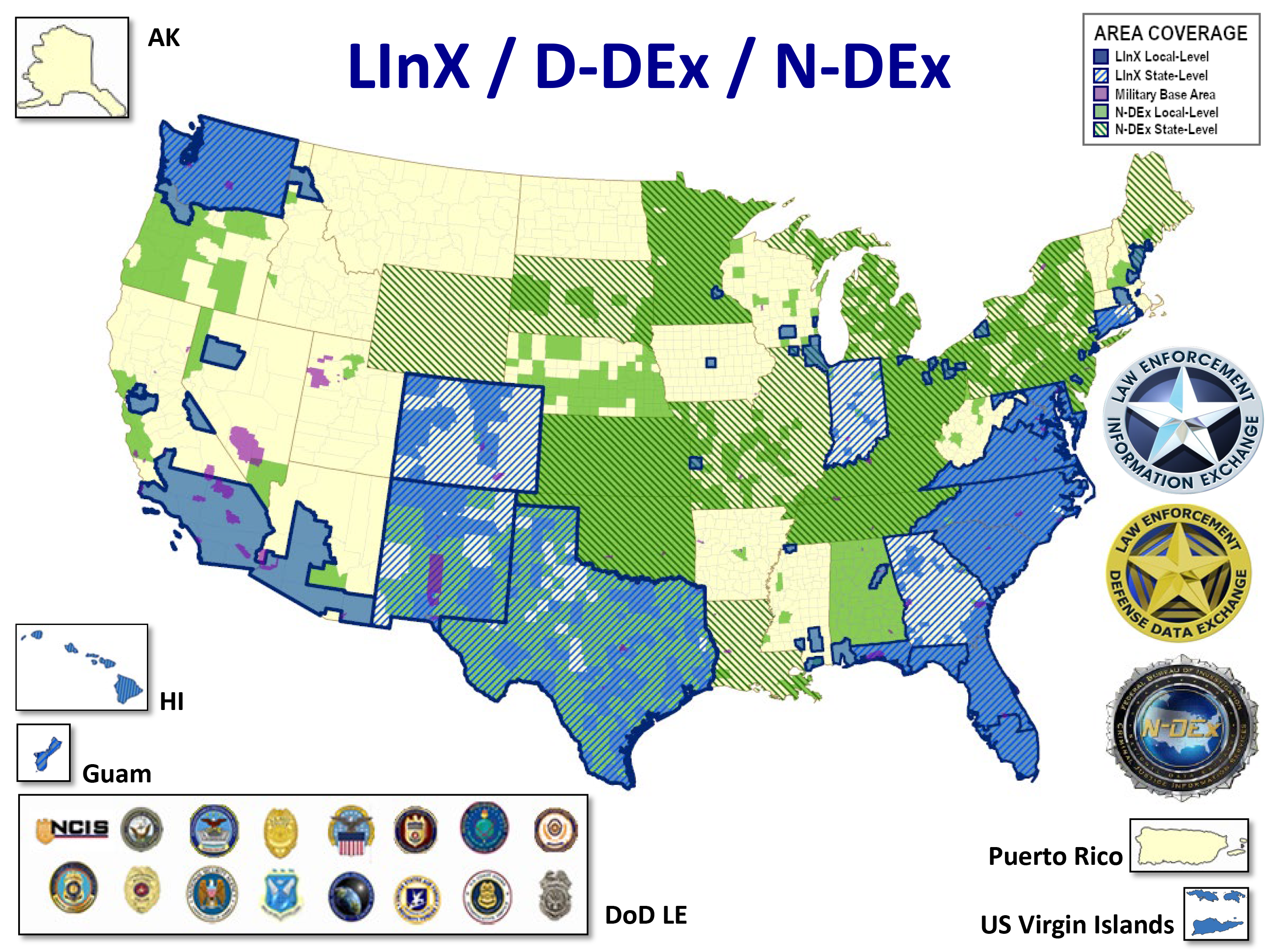
LInX is one of the largest law enforcement information sharing systems in the USA and it continues to grow. LInX connects thousands of law enforcement agencies (including military law enforcement agencies via D-DEx) to seamlessly share their 1.8 billion records amongst each other across jurisdictional lines coast to coast. Thanks to LInX, patrol officers, deputies, detectives, investigators, special agents, analysts, dispatchers, and 911 operators can easily use the program's cross-jurisdictional search and retrieval capabilities to gather critical information. Robust search, analysis, and mapping features enable them to identify subjects, analyze suspects, find missing persons, uncover relationships, find related criminal methods of operation, view mugshots and tattoos, give context, and much more, all via a single intuitive secure web-based user interface.

How LInX Works
LInX is federally funded and sponsored by NCIS. It is based on a simple "give-to-get" concept. Local, county, state, tribal, federal, and military law enforcement agencies can join, share their data, and reap all the benefits of this incredible wealth of searchable law enforcement information. Members can find, identify, and analyze suspects, associates, phone numbers, locations, relationships, criminal methods of operation, histories, mugshots, tattoos, and more, all via a single intuitive secure web-based user interface. LInX has proven adept at simplifying the identification and prosecution of criminals and terrorists, which, due to previously unsearchable or inaccessible cross-jurisdictional records, was impractical or impossible.
Join LInX
Contact us at NCISLINX-DDEX@NCIS.NAVY.MIL to learn more and speak directly to someone about your law enforcement agency joining LInX. Note that the LInX system is partnered with the FBI’s N-DEx system, meaning users with LInX can seamlessly search N-DEx records and vice-versa.
Success Stories
Here are some success stories to highlight the system's effectiveness as well as its broad application to any law enforcement agency:
-Rapidly identified a homicide victim by tattoos
-Untangled human trafficking organizations and relationships
-Identified people and vehicles based on partial information
-Identified organized retail theft suspects and their associates and vehicles
-Identified and contacted family members/caregivers of endangered persons